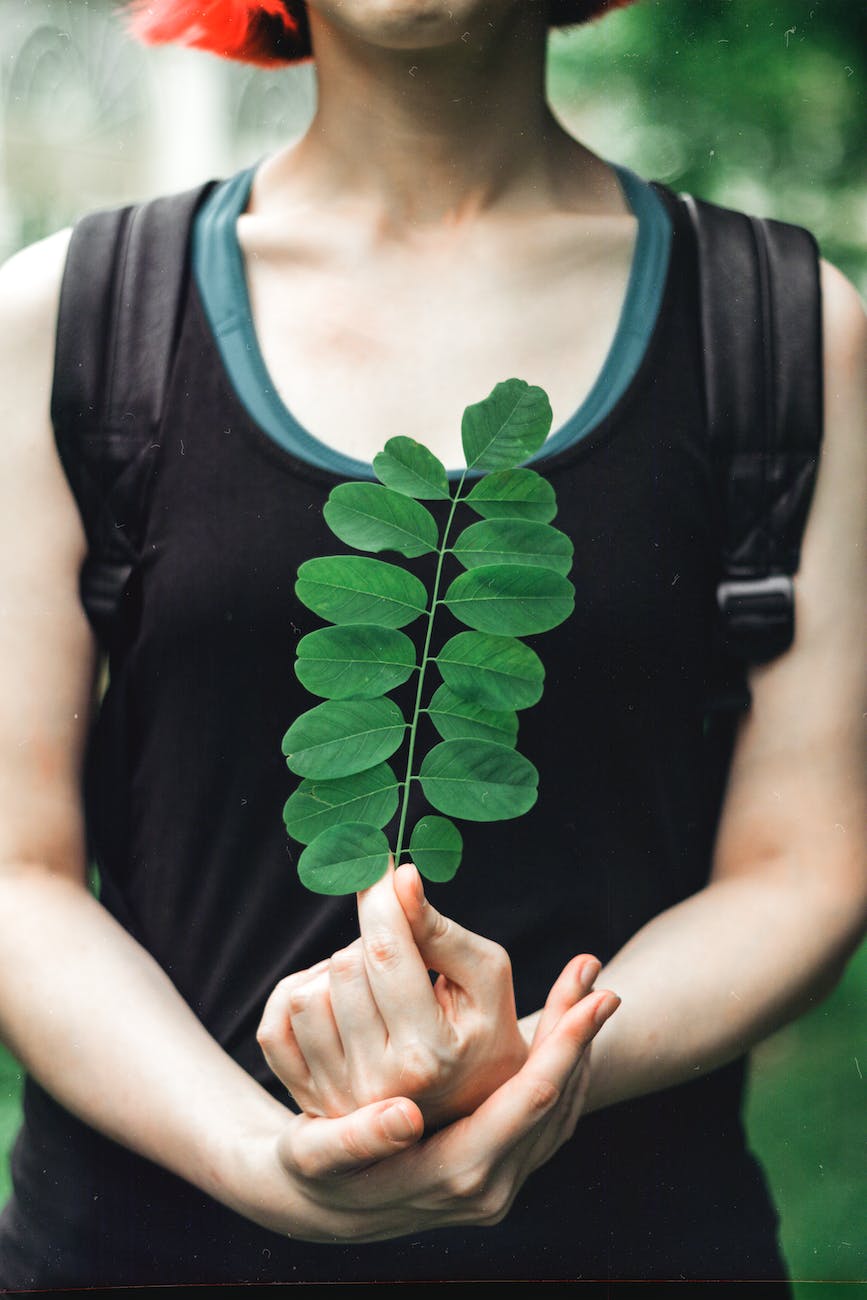
Welcome to the world of superfoods, where health and taste converge to offer the best for expectant mothers. Among these, kale stands out as a shining star, revered not just for its versatility but for its impressive array of nutrients vital for both mom and baby during the miraculous journey of pregnancy.
In this post, we’re diving deep into the green, leafy embrace of kale – a vegetable that has been celebrated since Roman times, not only for its earthy flavor but for its remarkable health benefits. Whether you’re in your first trimester or your last, whether you’re sailing through your pregnancy or navigating challenges like gestational diabetes or thyroid issues, kale has something to offer everyone.
But why kale? What makes this leafy green a must-have in your pregnancy diet? From its nutrient-dense profile to the myriad ways you can enjoy it, we’ll explore how kale can not only nourish you and your developing baby but also add a delicious twist to your meals.
So, let’s embark on this green journey, filled with culinary tips, nutritional insights, and a wholesome embrace of one of nature’s finest offerings for expectant mothers. Join us as we unfold the secrets of kale, a true superfood for supermoms.
Nutritional Profile of Kale – A Bounty of Benefits for Expectant Mothers
Kale, a member of the cabbage family, is more than just a leafy green. It’s a powerhouse of nutrition, essential for the complex journey of pregnancy. Let’s unravel the nutritional tapestry of kale and understand why it’s hailed as a prenatal superfood.
Vitamins and Minerals Galore
Kale is a treasure trove of vitamins and minerals, each playing a unique role in supporting a healthy pregnancy.
- Vitamin A: Found abundantly in kale, this vitamin is pivotal for fetal development and vision. It’s also crucial for building a robust immune system, an essential armor for both you and your baby against infections.
- Vitamin C: This antioxidant-rich vitamin not only boosts your immunity but also enhances iron absorption, a critical mineral for pregnancy. The vibrant green of kale is a testament to its rich vitamin C content.
- Vitamin K: Often overlooked but vital, vitamin K in kale supports blood clotting and bone health. As your body prepares to give birth, adequate vitamin K ensures you’re equipped for the birthing process.
- Folate: Perhaps the star of the prenatal vitamin world, folate in kale is crucial for preventing neural tube defects and supporting the rapid growth of the placenta and fetus. It’s a key player in the early stages of pregnancy.
Kale also packs a punch with minerals like calcium, essential for building your baby’s bones and teeth, and iron, crucial for preventing anemia and delivering oxygen to your baby.
Fiber and Iron – Allies in Pregnancy
Kale is high in dietary fiber, a boon for pregnant women often battling with constipation. This fiber also aids in maintaining a healthy digestive system, ensuring that both you and your baby receive the maximum nutrients from your diet. The iron content in kale is not to be understated either. Iron is a critical component in hemoglobin, the protein in your blood that carries oxygen. During pregnancy, your blood volume increases, demanding more iron to support both you and your developing baby.
The Antioxidant Advantage
The deep green color of kale is a visual cue to its rich antioxidant content. Antioxidants in kale, such as beta-carotene and lutein, play a protective role, safeguarding cells from damage. This is especially important during pregnancy when your body is undergoing rapid changes and is more susceptible to stress.
In every leaf of kale, there lies a spectrum of nutrients, each contributing to a facet of your pregnancy journey. From supporting fetal development to boosting your own health, kale is a vegetable that serves the needs of both you and your baby. In the next section, we’ll explore the culinary versatility of kale and how you can incorporate this nutrient powerhouse into your daily diet.
The Versatility of Kale in a Maternal Diet – A Green Canvas of Culinary Delights
Imagine a vegetable that can transform your pregnancy diet from mundane to marvelous. That’s kale for you – a green canvas waiting to be painted with a palette of flavors and textures. Whether you’re a culinary expert or a kitchen novice, kale’s versatility ensures it can find a place in any dish, satisfying diverse taste buds and dietary needs.
Different Types and Their Unique Flavors
Kale’s variety is as rich as its nutrient content. From the curly fringes of Green Kale, perfect for a crunchy addition to salads and smoothies, to the earthy depths of Lacinato or Dinosaur Kale, ideal for heartier dishes like soups and stews, there’s a type for every preference. Then there’s Red Russian Kale, with its slightly sweet and peppery undertones, excellent in stir-fries or simply sautéed as a side.
Recipe Ideas: From Smoothies to Salads
Kale’s culinary flexibility is its superpower. Start your day with a nutrient-packed kale smoothie, blending it with fruits like bananas or apples for a sweet twist. For lunch, toss up a kale salad – massage the leaves with a bit of olive oil to soften them, and then add your favorite ingredients like nuts, fruits, and a light vinaigrette.
Craving a snack? Kale chips are a healthy and delicious alternative to potato chips. Just tear the leaves, toss them with a touch of olive oil and your choice of seasonings, and bake until crispy. And for dinner, kale makes a great addition to pasta dishes, soups, or even as a pizza topping.
Making Kale Palatable: Tips for Expectant Mothers
Pregnancy can bring with it a rollercoaster of taste preferences and aversions. If the robust flavor of kale doesn’t appeal to you, there are ways to make it more palatable. Cooking kale can mellow its flavor. Try sautéing it with garlic or mixing it into a stew where it can absorb other flavors. If the texture is an issue, blending kale into smoothies or soups can make it more enjoyable.
Incorporating kale into your diet during pregnancy doesn’t have to be a chore. With a little creativity, it can add both nutrition and flavor to your meals, making your journey to motherhood both healthier and more delicious.
Kale for Every Trimester – Nourishing Mother and Baby from Conception to Birth
Pregnancy is a journey of constant change, not just emotionally and physically, but nutritionally as well. Each trimester brings with it unique nutritional demands, and kale, with its versatile nutrient profile, stands ready to meet these evolving needs.
First Trimester – Laying the Foundations with Folate
In the early weeks of pregnancy, when the baby’s neural tube is forming – which later becomes the brain and spinal cord – folate becomes a nutrient of paramount importance. Kale, rich in folate, supports this critical developmental stage. By incorporating kale into your diet during the first trimester, you’re contributing to the healthy neural development of your baby.
Second Trimester – Iron and Calcium for Growth
As you step into the second trimester, your baby’s growth accelerates, necessitating an increased intake of iron and calcium. The iron in kale helps meet the heightened demand for hemoglobin in your expanding blood volume. This is crucial not only for transporting oxygen to your baby but also for keeping you energized and anemia-free. The calcium in kale supports the skeletal development of your growing baby, while also maintaining your bone health.
Third Trimester – Fiber for Comfort, Vitamins for Immunity
In the final stretch of pregnancy, a common complaint is discomfort from constipation. The high fiber content in kale promotes digestive health, easing this discomfort. Moreover, the rich vitamin content, especially vitamins A and C, plays a key role in boosting both your and your baby’s immune systems, which is crucial as you prepare for childbirth and beyond.
Throughout Pregnancy – A Spectrum of Nutrients
Throughout your entire pregnancy, kale provides a spectrum of vitamins, minerals, and antioxidants. These nutrients not only support the various stages of fetal development but also cater to your changing body. The antioxidants in kale help combat oxidative stress, while the array of vitamins ensures that your body’s increased nutritional needs are met.
Kale is not just a food item; it’s a companion in your pregnancy journey, adaptable and rich, providing nourishment every step of the way. As you transition from one trimester to the next, kale can be a constant, versatile ally in your diet, supporting both your health and the health of your baby.
In the next part of our exploration, we delve into special considerations and precautions to keep in mind while including kale in your pregnancy diet. This is especially important to ensure that your kale consumption is not only beneficial but also safe and tailored to your individual health needs.
Navigating the Green: Special Considerations and Precautions with Kale During Pregnancy
While kale is undeniably a nutritional powerhouse for expectant mothers, it’s crucial to approach its consumption with awareness and care. Pregnancy is a time when dietary choices can have significant impacts, and what works for one may not be suitable for another. Here, we address the nuances of including kale in your pregnancy diet, focusing on specific conditions and the need for balance.
Managing Specific Pregnancy Conditions
Pregnancy can sometimes bring unexpected health challenges like gestational diabetes or hypertension. In such scenarios, kale can be both a friend and a foe. Its low calorie and high nutrient profile support a healthy diet, but aspects like vitamin K content, which affects blood clotting, need careful consideration, especially if you’re on blood thinners.
If you’re managing gestational diabetes, the fiber in kale can help regulate blood sugar levels. However, balancing kale with other low glycemic foods is key to maintaining a healthy blood sugar level. For those with thyroid conditions, be aware that kale contains goitrogens, which can interfere with thyroid hormone synthesis, especially if consumed in large quantities. Moderation is the mantra here.
Moderation and Balance – The Cornerstones of a Healthy Pregnancy Diet
Kale, though nutritious, should not be the sole superstar of your diet. A balanced diet during pregnancy includes a variety of fruits, vegetables, whole grains, lean proteins, and healthy fats. The goal is to create a symphony of nutrients that work in harmony to support your and your baby’s health. Remember, too much of a good thing can be an issue – balance is essential.
Safe Consumption Practices
When it comes to consuming kale, how you prepare it is as important as the quantity. Always opt for fresh, organic kale to minimize exposure to harmful pesticides. Wash it thoroughly under running water to remove any dirt or potential contaminants.
If you choose to have raw kale, such as in salads or smoothies, ensure it’s washed meticulously. For those who prefer cooked kale, steaming or sautéing are great options that retain most of its nutrients while making it easier to digest.
Listening to Your Body and Consultation with Healthcare Providers
Every pregnancy is unique, and what suits one woman may not suit another. It’s essential to listen to your body and observe how it reacts to different foods, including kale. Regular consultation with your healthcare provider or a registered dietitian is crucial. They can offer personalized advice based on your health history, current condition, and nutritional needs.
Kale can be a splendid addition to your pregnancy diet, but it’s important to integrate it thoughtfully, considering your specific health circumstances and dietary needs. In the final section, we will wrap up our kale exploration and leave you with some parting thoughts and tips for a healthy, kale-enriched pregnancy journey.
Concluding Thoughts: Embracing Kale in Your Pregnancy Journey with Mindfulness and Creativity
As we reach the end of our exploration into the world of kale and its place in pregnancy nutrition, it’s clear that this leafy green can play a significant role in nurturing both mother and baby. However, as with all things in life, especially during such a critical time as pregnancy, mindfulness and creativity in how we approach our diet can make all the difference.
A Balanced Diet: The Key to a Healthy Pregnancy
While kale is a nutritional gem, it’s essential to remember that it’s just one piece of the puzzle in your overall diet during pregnancy. A balanced diet, rich in a variety of nutrients from different food sources, is paramount. This not only ensures that you’re getting a broad spectrum of essential nutrients but also helps in avoiding the monotony that can sometimes come with eating the same foods repeatedly. Incorporate kale alongside other dark leafy greens, fruits, whole grains, lean proteins, and healthy fats to create a well-rounded and enjoyable pregnancy diet.
Creative Culinary Adventures with Kale
One of the joys of including kale in your diet is its versatility. Don’t hesitate to experiment with kale in your kitchen. From kale pesto to kale-infused muffins, the possibilities are endless. This not only makes your meals more interesting but can also help in discovering new and enjoyable ways to consume this nutritious vegetable. Engage in culinary adventures with kale, and you might just find your new favorite pregnancy craving.
Mindfulness in Consumption
Being mindful about how much and how often you consume kale is important. Pay attention to your body’s responses and adjust your intake accordingly. Remember, what works in one trimester might need tweaking in another as your body and your baby’s needs change. And always, before making any significant changes to your diet or if you have specific health concerns, consult with your healthcare provider for tailored advice.
The Kale Connection: A Part of Your Pregnancy Story
Kale can be more than just a food item during your pregnancy; it can be part of your journey, a symbol of the care and attention you’re giving to your health and the development of your baby. As you move through each trimester, let kale be a reminder of the strength and resilience of your body and the miraculous process it’s undergoing.
In conclusion, whether you’re enjoying a kale smoothie, a hearty kale salad, or a comforting bowl of kale soup, know that you’re nourishing your body and your baby with one of nature’s finest offerings. Embrace kale in your pregnancy journey with mindfulness, creativity, and joy. Here’s to a healthy, happy pregnancy filled with the goodness of kale!
10 FAQs for Kale and Pregnancy Post
- Is kale safe to eat during pregnancy?
- Yes, kale is safe and highly beneficial during pregnancy, being rich in essential nutrients like vitamins, minerals, and fiber. However, it should be consumed in moderation and as part of a balanced diet.
- How much kale should I eat during pregnancy?
- Aim for a couple of servings per week, ensuring a varied diet. A standard serving size is about 1 cup of chopped kale.
- Can eating kale help with pregnancy-related constipation?
- Yes, the high fiber content in kale can aid in digestion and help alleviate constipation, a common issue during pregnancy.
- Are there any risks associated with eating kale during pregnancy?
- Generally, kale is safe, but it’s important to consume it in moderation, especially if you have conditions like hypothyroidism, due to its goitrogen content. Always consult your healthcare provider for personalized advice.
- What are the best ways to include kale in my pregnancy diet?
- Kale can be enjoyed in various ways, such as in salads, smoothies, sautéed dishes, and even as baked kale chips. Experiment to find your preferred method.
- Does kale provide enough iron for pregnant women?
- Kale contains iron, but it should be part of an iron-rich diet including other sources, especially for pregnant women who have higher iron needs.
- Can kale consumption affect my baby’s development?
- Kale is beneficial for fetal development due to its rich nutrient content, particularly folate, which is crucial for neural development.
- Should I choose organic kale?
- Organic kale is preferable to minimize exposure to pesticides. Whether organic or not, ensure it’s thoroughly washed before consumption.
- Can kale improve my immunity during pregnancy?
- Yes, the high levels of vitamins A and C in kale can strengthen the immune system, which is beneficial during pregnancy.
- Is it better to eat kale raw or cooked during pregnancy?
- Both raw and cooked kale are beneficial. However, if you’re concerned about digestion or the presence of goitrogens, lightly cooking kale can be a good option.
Blog Tags for the Post:
pregnancy nutrition, kale benefits, healthy pregnancy, maternal diet, superfoods, prenatal vitamins, pregnancy recipes, dietary fiber, iron-rich foods, immune support during pregnancy













